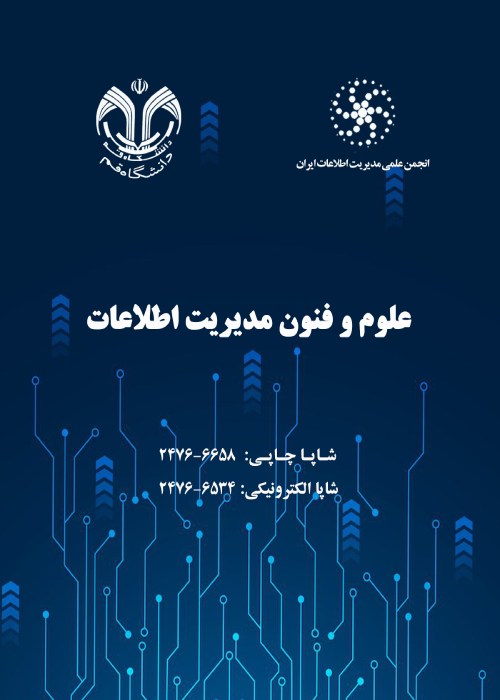Identifying Barriers to the Use of Information and Communication Technologyin Students, Educational Activities (Case Study of Urmia University)
Identifying barriers to the use of information and communication technology in the educational activities of Urmia University students.
This study is a sequential-exploratory mixed research . In the qualitative stage, the conventional content analysis method has been used and in the quantitative stage, descriptive survey research (mixed exploration) has been used. The statistical population includes all undergraduate and graduate students of Urmia University in the academic year 2019-2020 (13209 people). In the qualitative stage, 40 people are purposefully selected for in-depth interviews and the interviews are continued until the saturation stage. In the quantitative stage, simple random sampling method used, and 375 people are selected using Morgan table. The data collection tool is interview in the qualitative part and a researcher-made questionnaire in the quantitative part, open and axial coding using MAXQDA software is used for data analysis in the qualitative part, one-sample t-test and Friedman test using SPSS 25 software are used in the quantitative part. The face and content validities of the questionnaire is confirmed by researchers and experts. The reliability of the questionnaire is estimated to be 0.90 through Cronbach's alpha coefficient.
In the qualitative section, 55 basic concepts, of eighteen sub-categories, and four general categories are extracted, The four general categories are: 1) individual barriers (skills and knowledge - motivation and attitude); 2) economic barriers (financial resources - cost of skills training - provision of hardware and software); 3) cultural and educational barriers (society's attitude to technology- expert force professors’- weakness and theoretical knowledge - professors' views on information and communication technology) and; 4) infrastructural-technical barriers (limited access to technology - classroom and university space - technology facilities and equipment). In the quantitative part, individual barriers, economic barriers, cultural-educational barriers and infrastructure-technical barriers are the main barriers to the use of information and communication technology in the educational activities of Urmia University students.Among these, technical and infrastructural barriers are the most important and economic barriers are the least important barriers from the viewpoint of interviewees.
According to the results, technical and infrastructural barriers are the most important and most frequent barriers to information technology, so university officials should seek ways to solve these barriers.
- حق عضویت دریافتی صرف حمایت از نشریات عضو و نگهداری، تکمیل و توسعه مگیران میشود.
- پرداخت حق اشتراک و دانلود مقالات اجازه بازنشر آن در سایر رسانههای چاپی و دیجیتال را به کاربر نمیدهد.


